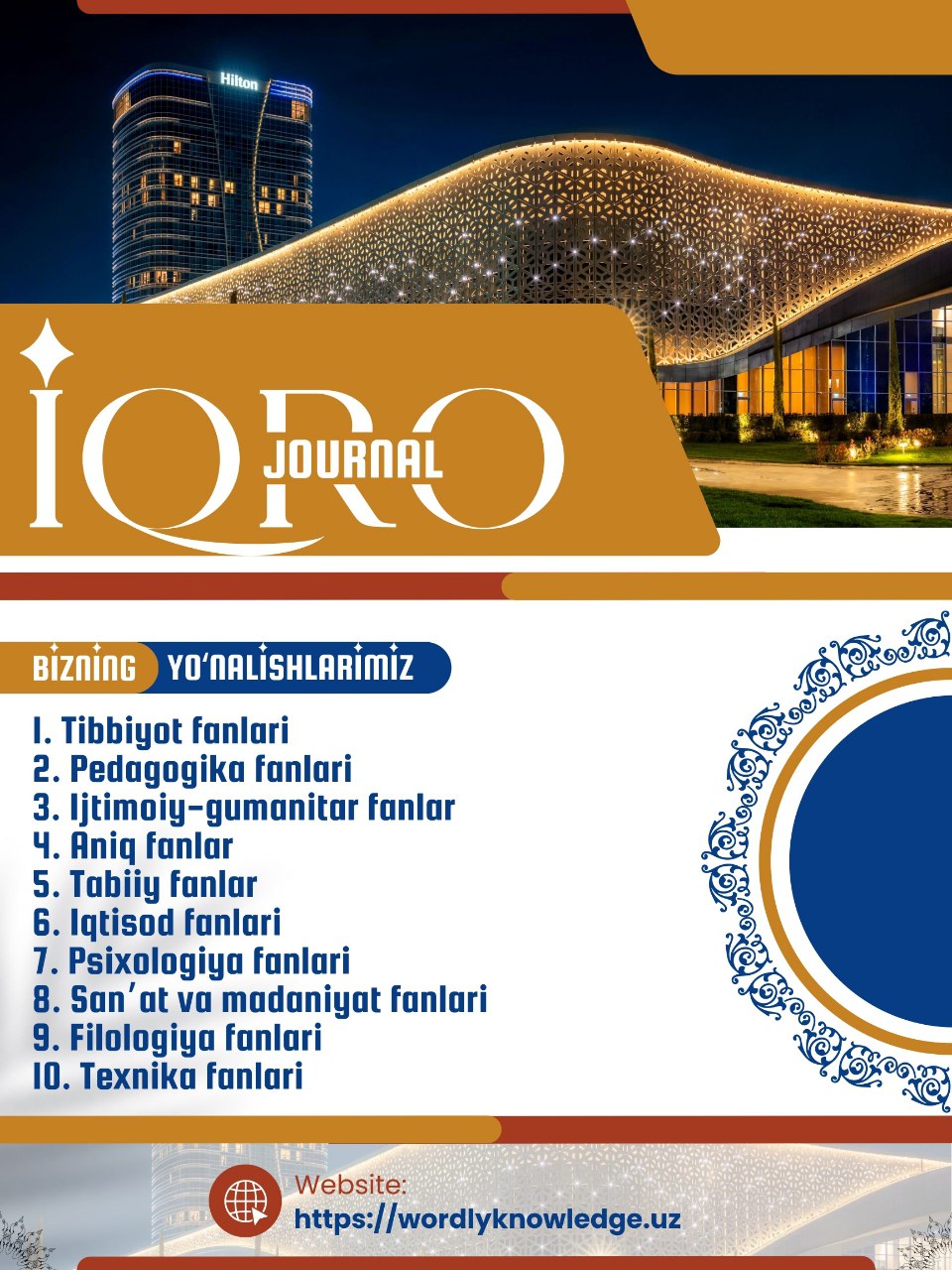THE INNER STRUGGLES AND PSYCHOLOGICAL CONFLICTS IN “THE GREAT GATSBY”
Keywords:
Conflicts, Great Gatsby, external and internal conflicts, major conflict, love triangle conflict, class conflict.Abstract
The article presents what types of conflicts exist in Great Gatsby, the real-life inspiration behind the East and West eggs of Great Gatsby, the greatest conflict and external and internal conflicts in Great Gatsby, and examples of them.
References
1.Tredell 2007, p. 124: An index note refers to Laurence E. MacPhee's "The Great Gatsby's Romance of Motoring: Nick Carraway and Jordan Baker", Modern Fiction Studies, 18 (Summer 1972), pp. 207–212.
2.Conor 2004, p. 301: "Fitzgerald's literary creation Daisy Buchanan in The Great Gatsby was identified with the type of the flapper. Her pictorial counterpart was drawn by the American cartoonist John Held Jr., whose images of party-going flappers who petted in cars frequented the cover of the American magazine Life during the 1920s".
3.Cole 1984, p. 26: "One hundred fifty-five thousand ASE copies of The Great Gatsby were distributed-as against the twenty-five thousand copies of the novel printed by Scribners between 1925 and 1942".
4.Pearson 1970, p. 638: "[Fitzgerald] was the self-appointed spokesman for the 'Jazz Age,' a term he takes credit for coining, and he gave it its arch-high priest and prophet, Jay Gatsby, in his novel The Great Gatsby".
5.Murphy 2010: From Fall 1922 to Spring 1924, Fitzgerald and his wife Zelda resided at 6 Gateway Drive in Great Neck, New York. While reflecting upon the wild parties held during the Jazz Age on "that slender riotous island", Fitzgerald wrote the early story fragments which would become The Great Gatsby.
6.Fitzgerald 1991, p. 9: "His speaking voice, a gruff husky tenor, added to the impression of fractiousness he conveyed. There was a touch of paternal contempt in it, even toward people he liked".
7.Harvey 1995, p. 76: "Marian Forrester, then, represents the American Dream boldly focused on self, almost fully disengaged from the morals and ethics to which it had been tied in the nineteenth century".
8.Tate 2007, p. 87: "He settled on The Great Gatsby in December 1924, but in January and March 1925 he continued to express his concern to Perkins about the title, cabling from CAPRI on March 19: crazy about title under the red white and blue stop what [sic] would delay be"
9.Lipton 2013: "Fitzgerald, who despised the title The Great Gatsby and toiled for months to think of something else, wrote to Perkins that he had finally found one: Under the Red, White, and Blue. Unfortunately, it was too late to change".
10.Mencken 1925, p. 9: "The Great Gatsby is in form no more than a glorified anecdote, and not too probable at that. The story for all its basic triviality has a fine texture; a careful and brilliant finish ... What gives the story distinction is something quite different from the management of the action or the handling of the characters; it is the charm and beauty of the writing".














